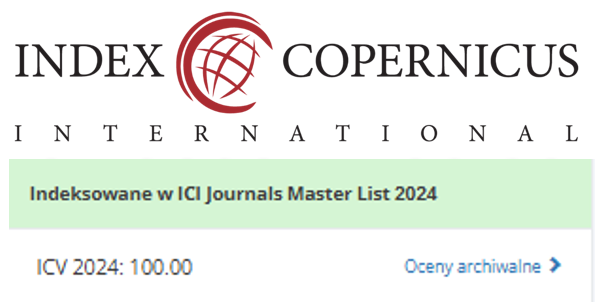The Relationship Between Diet and the Incidence of Dyspepsia in School-Age Children (6-18 years) at the Sukabumi Health Center, A Cross-Sectional Study
DOI:
https://doi.org/10.55018/janh.v7i3.379Keywords:
Diet, Dyspepsia, Child, Cross-Sectional StudiesAbstract
Background: Dyspepsia, a disorder of the upper gastrointestinal tract, is a worldwide health problem. In Indonesia, it ranks among the most frequent conditions in primary healthcare. Research on the relationship between dietary habits and dyspepsia in school-aged children, particularly in primary health centers in Sukabumi, is limited. This study aims to explore the association between irregular eating patterns and dyspepsia in this age group.
Methods: This study used quantitative research with a cross-sectional design, involving 51 purposively selected children aged 6–18 years visiting the Sukabumi Public Health Center between January and March 2025. Inclusion criteria were children aged 6–18 years, with a history of dyspepsia, and willingness to participate by completing questionnaires. Exclusion criteria included diagnosis of Helicobacter pylori infection, use of gastrointestinal-impacting medications, or presence of malignant or chronic upper gastrointestinal diseases. Data were collected using a validated questionnaire adapted from prior research, demonstrating good validity and reliability.
Results: From the results obtained, 12 children had a good diet was 12 people (23.5%), and 39 children had poor diets (76.5%). Meanwhile, 35 children with dyspepsia (68.6%) and children who did not experience dyspepsia were 16 people (31.4%). There was a relationship between diet and the incidence of dyspepsia in school-age children (6-18 years) at the Sukabumi Health Center, with a p-value = 0.003, which could be interpreted as (p < 0.05) or (0.003 < 0.05)
Conclusion: Irregular dietary habits are linked to dyspepsia in school-aged children at the Sukabumi Health Center, emphasizing the need for healthy eating promotion in local, resource-limited settings of middle- and low-income countries.
Downloads
References
Amelia, K. (2022). Faktor-Faktor yang Berhubungan dengan Dispepsia pada Mahasiswa Tingkat Akhir. UIN Syarif Hidayatullah Jakarta-FIKES. https://repository.uinjkt.ac.id/dspace/handle/123456789/67282
Anindia, F. P. (2024). Hubungan Pola Makan Dengan Kejadian Dispepsia Pada Pasien Dewasa di Ruang Rawat Inap Alamanda Rumah Sakit Bhakti Medicare Kabupaten Sukabumi. Journal Health Society, 13(1), 38–46. https://jsk.ff.unmul.ac.id/index.php/JSK/article/view/355
Ashari, A. N., Yuniati, Y., & Murti, I. S. (2021). Hubungan Tingkat Stres Dengan Kejadian Dispepsia Fungsional Pada Mahasiswa Fakultas Kedokteran Universitas Mulawarman. Jurnal Kesehatan Tambusai, 2(2), 98–102. https://doi.org/10.31004/jkt.v2i2.1826
Erin Kurnia Sari, Fathinah R. Hardy, Ulya Q. Karima, & Terry Y.R. Pristya. (2021). Faktor Risiko Sindrom Dispepsia Pada Remaja Wilayah Kerja Puskesmas Kecamatan Palmerah. Jurnal Ilmiah Ilmu Kesehatan, 9(3), 431–446. https://jurnal.unitri.ac.id/index.php/care/article/view/2296
Faridah, U., Hartinah, D., & Farida, N. (2021). Relationship of diet with frequency of recurrence of dyspepsia in Puskesmas Pamotan Rembang Regency. The 14thUniversity Research Colloqium, 495. http://download.garuda.kemdikbud.go.id/article.php?article=3030655&val=27441&title=Relationship Of Diet With Frequency Of Recurrence Of Dyspepsia In Puskesmas Pamotan Rembang Regency
Hassanah, M., Abdullah, A., & Do Toka, W. (2023). Hubungan Antara Pola Makan Terhadap Kejadian Dispepsia Di Puskesmas Gambesi. Cerdika: Jurnal Ilmiah Indonesia, 3(08), 769–774. https://doi.org/10.59141/cerdika.v3i08.657
Hermawan, S., Amrullah, J. F., & Lilis Hadiyati, A. S. (2023). Hubungan Pola Makan dengan Kejadian Gastritis Pada Mahasiswa Diploma Tiga Keperawatan di Stikes Dharma Husada The. Jurnal Keperawatan, 1–24. https://siakad.stikesdhb.ac.id/repositories/400320/4003200030/ARTIKEL PDF.pdf
Hidayat, R., Susanto, A., & Lestari, A. (2023). Literature Review: The Relationship between Eating Habits and Dyspepsia in Adolescents. Amerta Nutrition, 7(4), 626–637. https://doi.org/10.20473/amnt.v7i4.2023.626-637
Noor, M. K., Muthmainah, N., Heriyani, F., Asnawati, A., & Nursantari, W. (2024). Hubungan Keteraturan Pola Makan Dengan Sindrom Dispepsia Pada Mahasiswa PSKPS FKIK ULM. Homeostasis, 7(1), 119–126. https://doi.org/10.20527/ht.v7i1.12392
Octaviana, E. S. L., Noorhidayah, & Rachman, A. (2021). Hubungan Pola Makan dan Stress dengan Kejadian Dispepsia pada Siswa di SMP Negeri Karang Intan. Jurnal Kesehatan Indoensia, 11(2), 76–81.
Prasetyo, A. V., Yuliana, Y., & Karmaya, I. N. M. (2023). Hubungan Antara Pola Makan dan Tingkat Stres terhadap Kejadian Dispepsia pada Mahasiswa Fakultas Kedokteran Universitas Udayana Angkatan 2019. E-Jurnal Medika Udayana, 12(7), 25. https://doi.org/10.24843/mu.2023.v12.i07.p04
Puspita, K. (2024). Dispepsia Dan Solusi Alami Pengobatannya. Victory Pustaka Media.
Putri, A. N., Maria, I., & Mulyadi, D. (2022). Hubungan karakteristik individu, pola makan, dan stres dengan kejadian dispepsia pada mahasiswa Program Studi Kedokteran Universitas Jambi angkatan 2018. Journal of Medical Studies, 2(1), 36–47. https://doi.org/10.22437/joms.v2i1.18091
Saad, N. M., Irwan, I., & Ahmad, Z. F. (2024). Faktor-Faktor Yang Berhubungan Dengan Kejadian Dispepsia Di Wilayah Kerja Puskesmas Kota Timur Kota Gorontalo. Journal Health & Science: Gorontalo Journal Health and Science Community, 8(4), 238–243. https://doi.org/10.35971/gojhes.v8i4.26412
Saputra, A. (2022). Faktor-Faktor Yang Berhubungan Dengan Dispepsia Di Desa Koto Perambahan Wilayah Kerja Puskesmas Kampa Tahun 2022. Universitas Pahlawan Tuanku Tambusai. http://repository.universitaspahlawan.ac.id/id/eprint/1681
Suriadi, G. M., Ladyani, F., & Anggraeni, S. (2024). Hubungan Pola Makan Dan Stres Dengan Kejadian Dispepsia Pada Siswa-Siswi Madrasah Aliyah Ashabul Yamin Cikembar Sukabumi. Jurnal Ilmu Kedokteran Dan Kesehatan, 11(1), 185–195. https://doi.org/10.33024/jikk.v11i1.11350
Susan, A., Lanhan-New, A., Helen, M., & Ian, A. M. (2015). Nutrition and Metabolism. Wiley-Blackwell.
Syapitri, H., Amila, N., Kep, M., Kep, S., & Aritonang, J. (2021). Buku ajar metodologi penelitian kesehatan. Ahlimedia Book. https://books.google.com/books?hl=id&lr=&id=7_5LEAAAQBAJ&oi=fnd&pg=PP1&dq=related:DafcajiMifkJ:scholar.google.com/&ots=EuQJgpv97n&sig=birLYfMUUgr2Ils72CbwWO5PH1I
Tamaulina, B., S., Irmawati., Muhammad, S., & Indra, T. (2023). Buku Ajar Metodologi Penelitian (Teori dan Praktik). Saba Jaya Publisher.
Thoriq, M. A., & Ariati, A. (2023). Hubungan Pola Makan Dengan Kejadian Dispepsia Fungsional Pada Mahasiswa Fakultas Kedokteran Uisu Angkatan 2018. Ibnu Sina: Jurnal Kedokteran Dan Kesehatan - Fakultas Kedokteran Universitas Islam Sumatera Utara, 22(1), 38–42. https://doi.org/10.30743/ibnusina.v22i1.363
Timah, S. (2021). Hubungan pola makan pada pasien dispepsia. Jurnal Ilmiah Kesehatan Diagnosis, 16(1), 47–53.
Downloads
Published
How to Cite
Issue
Section
License
Copyright (c) 2025 Reni Anggraeni

This work is licensed under a Creative Commons Attribution-ShareAlike 4.0 International License.


















